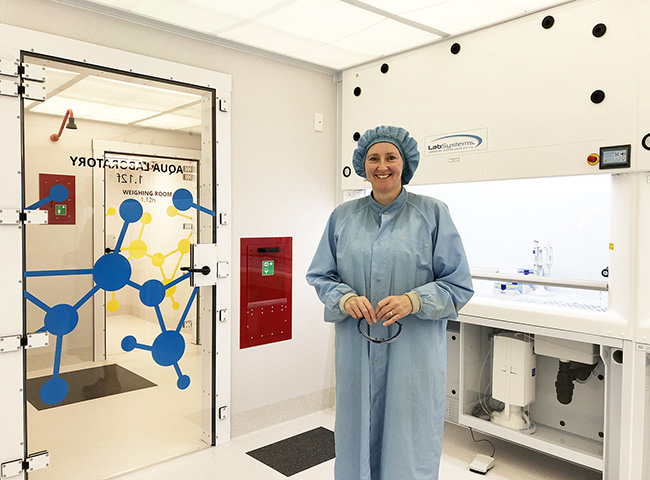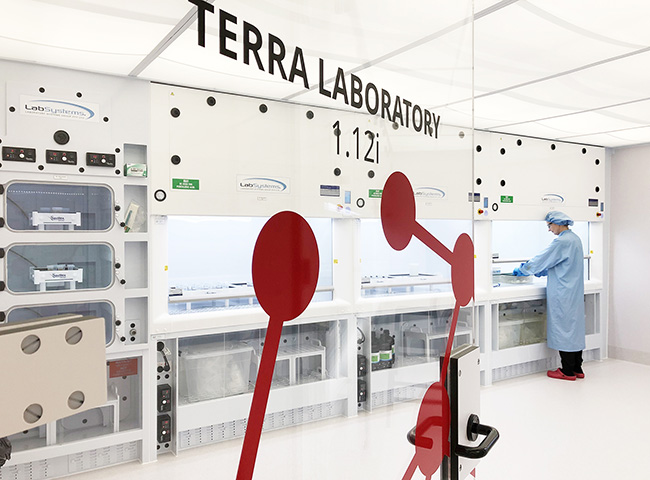Tuesday 22 October 2019 9:04am

Professor Claudine Stirling in Otago’s Clean Lab
A world-class research facility producing filtered air 100,000 times cleaner than outside air, is the newest addition to the University of Otago’s Mellor Laboratory.
The completion of a metal-free Clean Lab is the most extensive of its kind in New Zealand and will enhance Otago’s established reputation in trace metal research.
Professor Claudine Stirling, Director of Otago’s Centre for Trace Element Analysis, says the Clean Lab is designed to protect the metals under analysis from both us and the environment.
“Metals participate in all sorts of different processes and they exist everywhere including on us,” Professor Stirling says.
“A lot of metals that provide useful information exist at very low levels, down to parts-per-trillion concentrations or even lower, so it's crucial to reduce background levels as much as possible.”
Even a speck of dust is loaded with metals so can potentially contaminate a sample being tested, Professor Stirling explains.The Clean Lab’s high design specifications include the filtered air being renewed at a rate of 100 changes per hour, positively pressured rooms that ensure any residual air moves from the inside to the outside of the labs, and access to high-purity water on-tap for processing samples.

Professor Claudine Stirling in Otago’s Clean Lab
Currently used for analysis across a broad range of sciences, the Clean Lab will support a growing diversity of applications from earth sciences to archaeology, and forensics to climate change.
Underlying the research undertaken in the Clean Lab is the recognition that different environments are defined by different metal isotope and metal concentration signatures.
"Tracking these types of changes provides information about underlying processes for applications as diverse as the origin of the Solar System, heavy metal contamination in the environment, oceanic carbon dioxide uptake, and human migration patterns."
However, Professor Stirling says there are also many new exciting areas such as biomedical cancer research and how nutrients are absorbed by the body, which this facility will now be able to support.
Professor Stirling's own Marsden-funded research on environmental change during periods of global warming will also benefit from the new facility.
Her team have recently returned from field research in a Norway fiord known to have the highest global 'de-oxygenation' levels for a marine environment.
Through the analysis of trace metals and their isotopes, one of the project’s aims is to reconstruct how ocean de-oxygenation progresses as climate warms.
“The lab will allow us to achieve this by enabling minute amounts of the elements to be extracted, without contamination, from a wide variety of different sample types ranging from seawater to sediment to rocks.”
The Clean Lab consists of a series of rooms, including two equipped with individual workstations allowing three to four scientists to work in each room simultaneously, and also for the separation of incompatible sample types.
Professor Stirling says she has worked in many similar laboratories around the world, and the Clean Lab is an outstanding facility for trace metal research which will allow some “amazing science” to take place.
For more information, contact:
Professor Claudine Stirling
Department of Chemistry
Email cstirling@chemistry.otago.ac.nz
